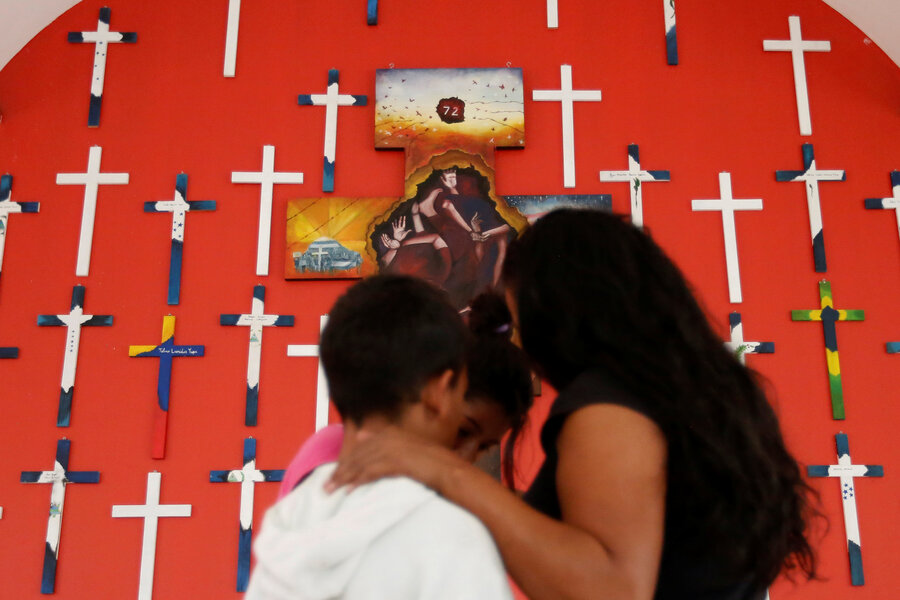Why migrants, en route to the United States, are pausing in Mexico
Loading...
| Tenosique, Mexico
Cradling her newborn son in a steamy migrant shelter near the Guatemalan border, Concepcion Bautista says she still plans to reach the United States, but will linger in Mexico to see how US President Trump's immigration policies play out.
Ms. Bautista fled Guatemala after gang members threatened to kill her and seized her home, demanding money to give it back.
Her ultimate goal is to reunite with her father and two sons up north, but for the time being, she believes applying for asylum in Mexico is smarter than trying to break into Mr. Trump's United States.
"I'm not going back to Guatemala," she said at the shelter in the southern Mexican city of Tenosique. "I have faith that we'll be able to cross but for now, at least, I'm staying in Mexico."
The Trump administration has pointed to a sharp decline in immigrant detentions in the first few months of this year as a vindication for the president's tough immigration policies, which have sent shudders through immigrant communities across the continent.
Mexican asylum data and testimony from migrants in Tenosique suggest that although fewer Central Americans are trying to enter the United States, plenty are still fleeing their poor, violent home countries, with many deciding to stay longer in Mexico, which has traditionally been a transit country.
The number of people applying for asylum in Mexico has soared by more than 150 percent since Donald Trump was elected president, Reuters reported last month, while some Mexican immigrants would rather set up in Canada than the United States.
Between Trump's election in November and March, 5,421 people applied for asylum in Mexico, up from 2,148 people in the same period a year earlier, Mexican government data shows.
Samuel, who used a pseudonym, was threatened with death after gangs kidnapped and murdered his 19-year-old son in El Salvador, prompting him to plan a move with his family to the United States. Trump's election changed everything.
"I wanted to go to the United States with my family, but we've seen that the new government there has made things harder," said Samuel,
"For the time being, we want to stay here in Mexico, and we've already applied for refugee status."
Asylum applications in Mexico rose steadily in recent years as the flow of people leaving Central America increased. But in 2016, as Trump campaigned on a tough anti-immigration platform, applicants jumped to 8,781, up from just under 3,500 in 2015. Mexico's refugee agency COMAR predicts it could receive more than 22,500 asylum applications in 2017.
Despite their concerns, some Central Americans are undeterred and have decided to try their luck at entering the United States.
In a remote, rocky tract of land near the Guatemalan border, Feliciano del Cid and two traveling companions were trying to sneak past Mexican immigration officers and avoid being assaulted by gang members on their long trek north.
The 60-year-old Guatemalan said the prices charged by people smugglers had risen sharply since Trump took office, now hovering around $10,000 dollars, up from about $6,000 a few years ago.
With Mexico's immigration authorities controlling migration more assiduously, Central Americans were forced to take more isolated, dangerous routes where the chances of being mugged were higher. "We've gone north (to the United States) several times, but every time it's got harder," said Mr. del Cid, who was deported from the United States in December. "(Now,) it's better if we travel alone, along new routes."
Irrespective of struggles in Mexico and the hard journey north, all of the migrants were certain they did not want to return home.
"Only death awaits me there," said Samuel.





